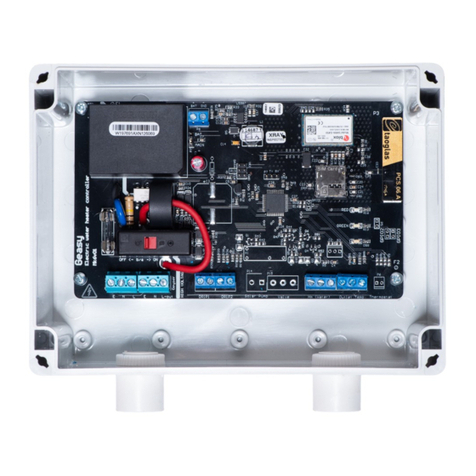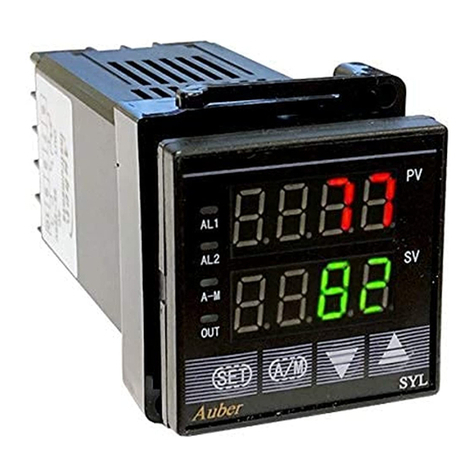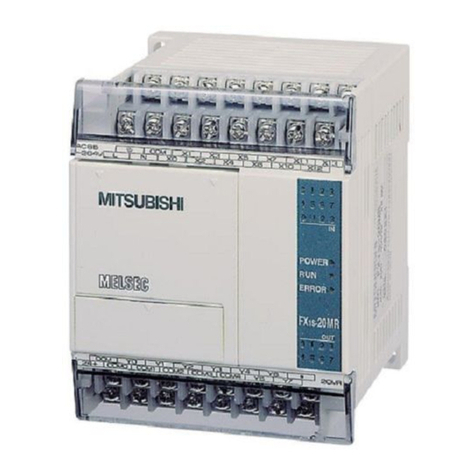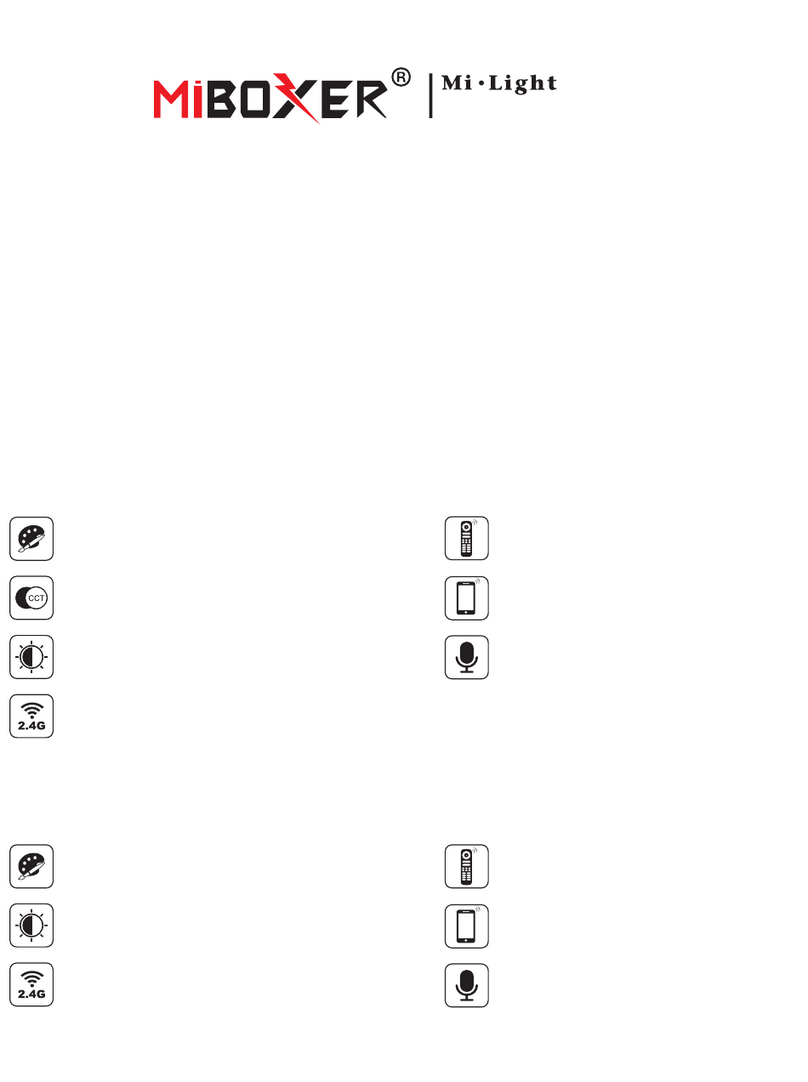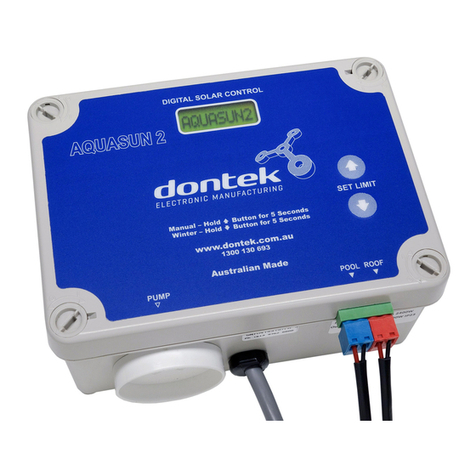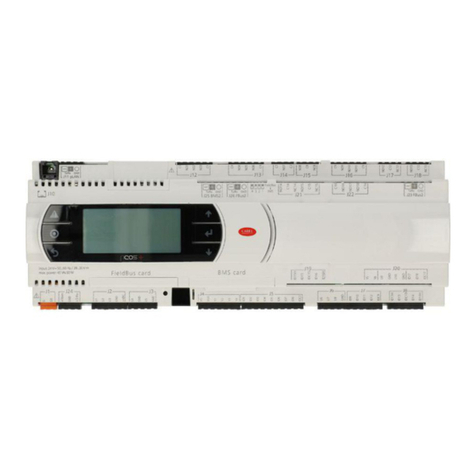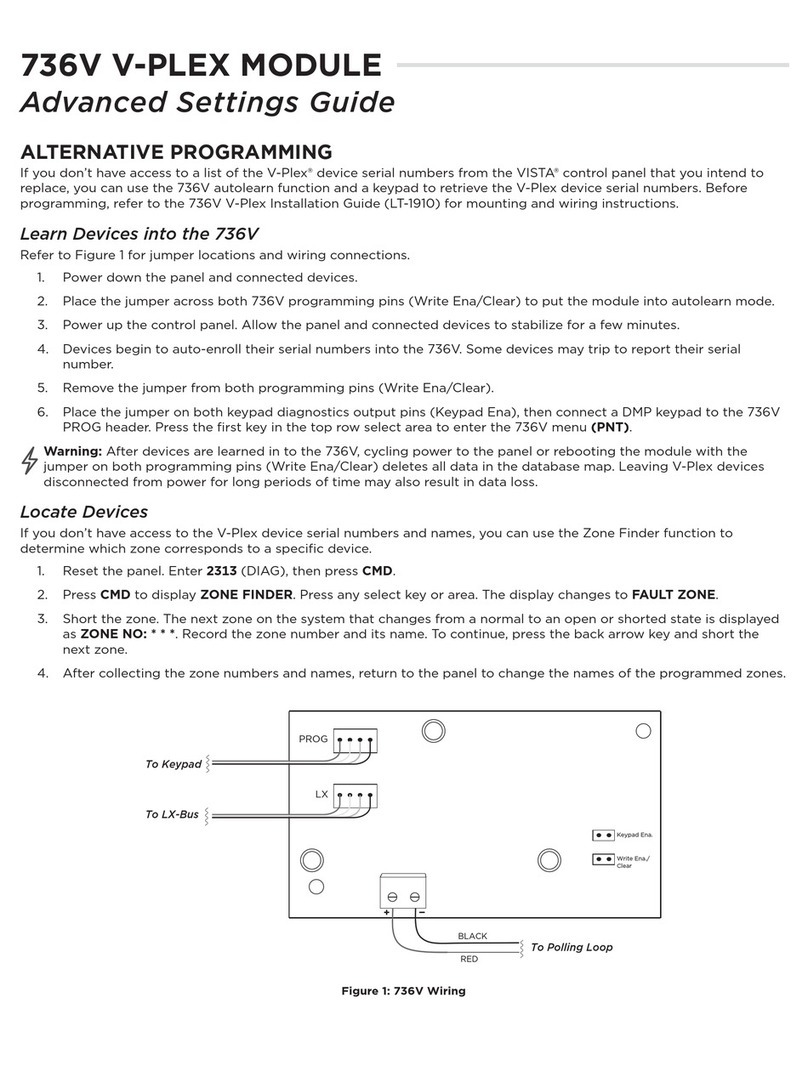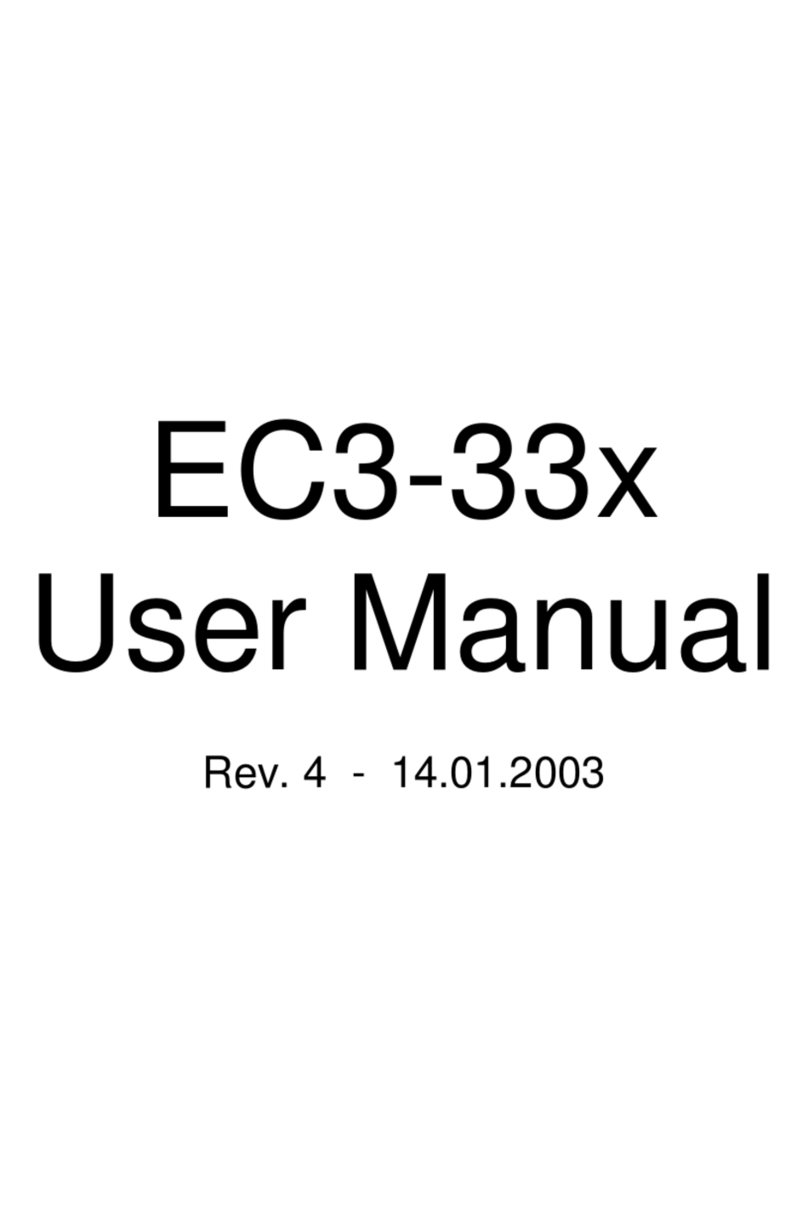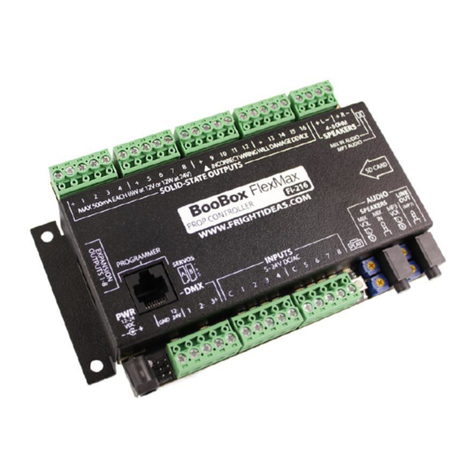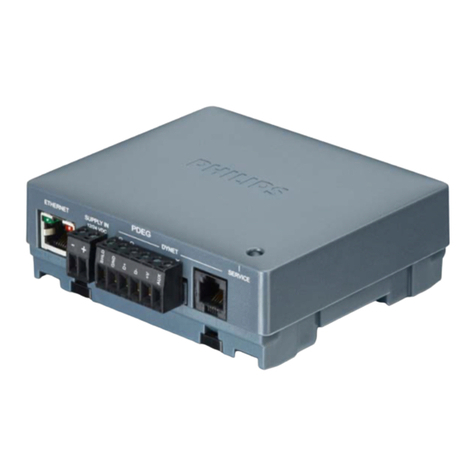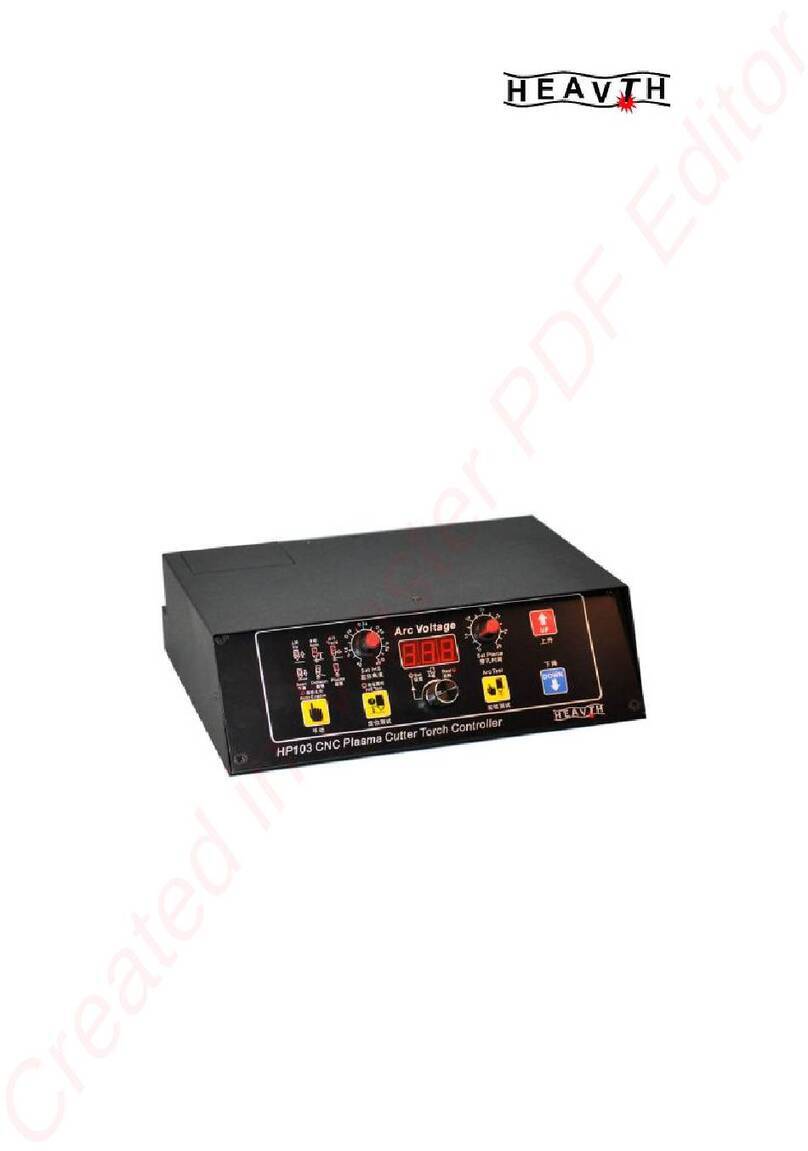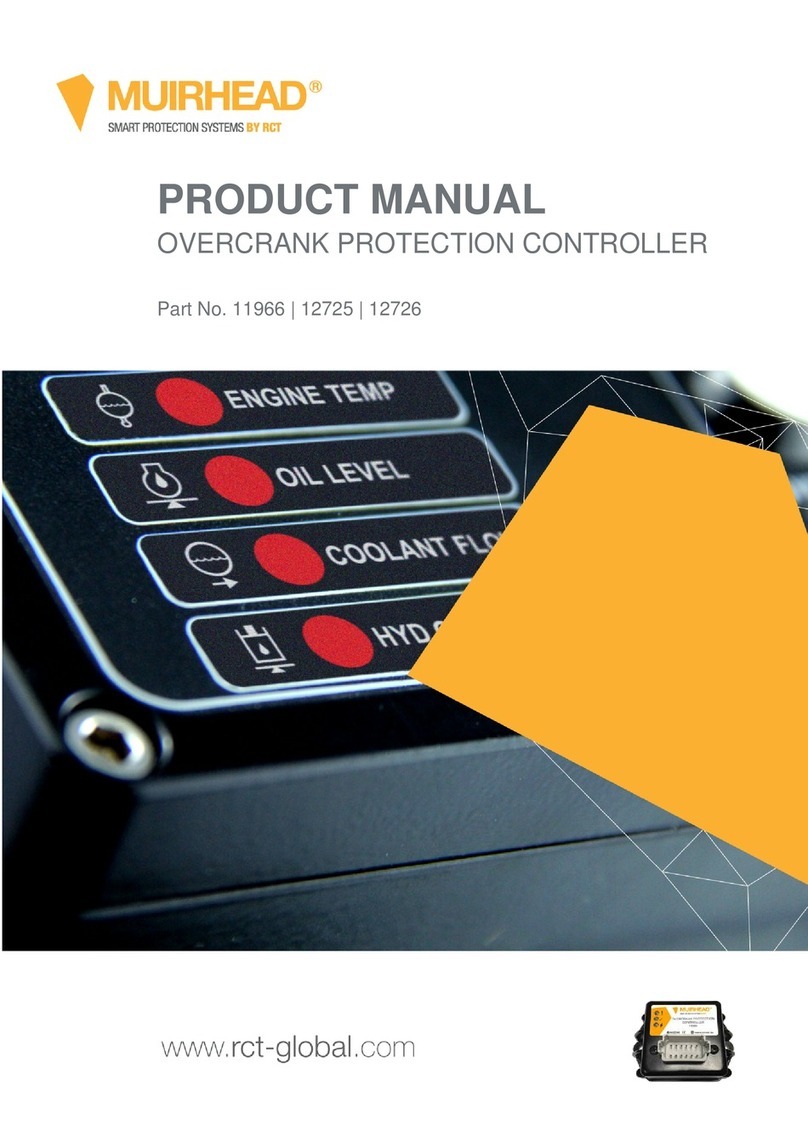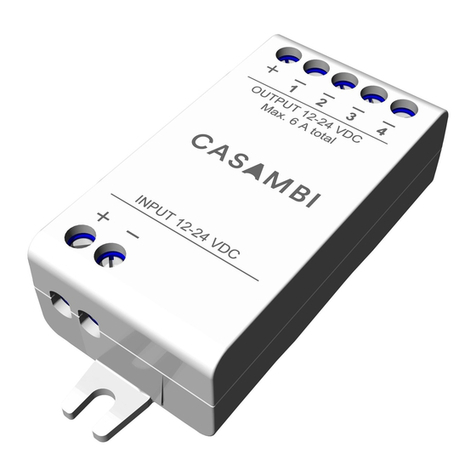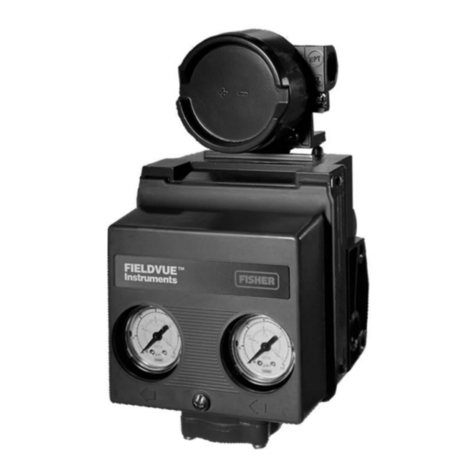GE Multilin F650 User manual

*GEK-106310AF*
F650 Digital Bay Controller
GE
Grid Solutions
Instruction Manual
Firmware version: 7.5x
EnerVista F650 Setup version: 7.5x
GE publication code: GEK-106310-AF
LISTED

© 2017 GE Multilin Inc. All rights reserved.
GE Multilin F650 Feeder Protection System instruction manual for revision AF.
F650 Feeder Protection System, EnerVista, and EnerVista 650 family
Setup are registered trademarks of GE Multilin Inc.
The contents of this manual are the property of GE Multilin Inc.
This documentation is furnished on license and may not be reproduced in
whole or in part without the permission of GE Multilin. The content of
this manual is for informational use only and is subject to change without notice.
Part number: GEK-106310-AF (June 2017)

GEK-106310-AF F650 DIGITAL BAY CONTROLLER 1-1
F650 Digital Bay Controller
Table of Contents
GE
Grid Solutions
1 GETTING STARTED 1.1 Important procedures ..................................................................................... 1-1
1.1.1 Cautions and warnings ....................................................................................................... 1-1
1.1.1.1 General cautions and warnings.................................................................................................1-2
1.1.1.2 Communication board withdrawal/insertion......................................................................1-3
1.1.1.3 Magnetic module terminals.........................................................................................................1-4
1.1.2 Inspection checklist............................................................................................................... 1-5
1.1.3 Safety instructions................................................................................................................. 1-7
1.1.3.1 General safety instructions..........................................................................................................1-8
1.1.3.2 Warning symbols..............................................................................................................................1-9
1.2 Overview ..........................................................................................................1-10
1.2.1 Introduction to the 650 family of relays....................................................................1-10
1.2.2 Hardware architecture......................................................................................................1-10
1.2.2.1 F650 basic design.......................................................................................................................... 1-10
1.2.2.2 F650 signal type............................................................................................................................. 1-11
1.2.3 Communications architecture .......................................................................................1-11
1.3 EnerVista 650 Setup software......................................................................1-14
1.3.1 System requirements.........................................................................................................1-14
1.3.2 Installation...............................................................................................................................1-14
1.3.3 Connecting EnerVista 650 Setup to the F650.........................................................1-18
1.3.3.1 Configuring an Ethernet connection .................................................................................... 1-18
1.3.3.2 Configuring the RS232 connection....................................................................................... 1-18
1.4 650 hardware..................................................................................................1-19
1.4.1 Mounting & wiring................................................................................................................1-19
1.4.2 650 communications..........................................................................................................1-19
1.4.3 Faceplate display.................................................................................................................1-20
1.4.4 Maintenance...........................................................................................................................1-21
1.4.4.1 General maintenance.................................................................................................................. 1-21
1.4.4.2 In-service maintenance.............................................................................................................. 1-21
1.4.4.3 Out-of-service maintenance .................................................................................................... 1-21
1.4.4.4 Unscheduled maintenance....................................................................................................... 1-21
1.4.5 Storage......................................................................................................................................1-21
1.4.6 Repairs.......................................................................................................................................1-22
1.4.7 Disposal.....................................................................................................................................1-22
2PRODUCT
DESCRIPTION
2.1 F650 Overview................................................................................................... 2-1
2.2 ANSI device numbers and functions............................................................. 2-3

1-2 F650 DIGITAL BAY CONTROLLER GEK-106310-AF
CHAPTER 1:
2.3 Other device functions ....................................................................................2-4
2.4 Order codes .......................................................................................................2-5
2.4.1 CIO Modules ..............................................................................................................................2-7
2.5 Technical specifications..................................................................................2-8
2.5.1 Protection ...................................................................................................................................2-8
2.5.2 Control.......................................................................................................................................2-16
2.5.3 Monitoring...............................................................................................................................2-19
2.5.4 User-programmable ..........................................................................................................2-21
2.5.5 Metering ...................................................................................................................................2-22
2.5.6 Inputs.........................................................................................................................................2-22
2.5.7 Real time clock......................................................................................................................2-24
2.5.8 Outputs.....................................................................................................................................2-24
2.5.9 Control power supply ........................................................................................................2-24
2.5.10 Communications..................................................................................................................2-25
2.5.11 Optical.......................................................................................................................................2-27
2.5.12 Environmental .......................................................................................................................2-28
2.5.13 Packaging and weight.......................................................................................................2-28
2.5.14 Type tests ................................................................................................................................2-28
2.5.15 Approvals.................................................................................................................................2-29
2.6 External connections .....................................................................................2-30
3 HARDWARE 3.1 Module description...........................................................................................3-1
3.2 Power supply ..................................................................................................... 3-3
3.3 Mechanical description ...................................................................................3-4
3.3.1 Mounting.....................................................................................................................................3-4
3.3.2 Rear description ......................................................................................................................3-7
3.4 Wiring ...............................................................................................................3-10
3.4.1 External connections..........................................................................................................3-10
3.4.2 Digital inputs with trip circuit supervision................................................................3-10
3.4.3 Cable/fiber Ethernet board .............................................................................................3-11
3.5 Transceiver optical power budget vs. link length ....................................3-12
4INTERFACES,
SETTINGS & ACTUAL
VALUES
4.1 EnerVista 650 Setup software ........................................................................4-1
4.1.1 Introduction...............................................................................................................................4-1
4.1.1.1 Using settings files ........................................................................................................................... 4-2
4.1.1.2 Viewing actual values..................................................................................................................... 4-2
4.1.1.3 Viewing triggered events .............................................................................................................. 4-2
4.1.1.4 Firmware upgrades......................................................................................................................... 4-2
4.1.1.5 One line diagrams............................................................................................................................ 4-2
4.1.2 Main screen ...............................................................................................................................4-3
4.1.3 Connect to the relay..............................................................................................................4-4
4.1.3.1 Computer Settings: .......................................................................................................................... 4-5
4.1.3.2 Communication Control: ............................................................................................................... 4-5
4.1.3.3 Communication Optimization:.................................................................................................... 4-5
4.1.4 File management menu ......................................................................................................4-6
4.1.4.1 Offline mode........................................................................................................................................4-6
4.1.4.2 Online mode........................................................................................................................................ 4-8
4.1.5 EnerVista 650 Setup menu..............................................................................................4-10
4.1.6 File menu .................................................................................................................................4-11
4.1.6.1 New, Open, Save, Save as, and Close ..................................................................................4-12
4.1.6.2 Configuration file converter.......................................................................................................4-13
4.1.6.3 Properties...........................................................................................................................................4-15
4.1.6.4 Print options......................................................................................................................................4-15
4.1.6.5 Compare to settings file ..............................................................................................................4-16
4.1.6.6 PLC checksum calculation .........................................................................................................4-16

CHAPTER 1:
GEK-106310-AF F650 DIGITAL BAY CONTROLLER 1-3
4.1.6.7 Setting checksum calculation.................................................................................................. 4-17
4.1.7 Setpoint menu .......................................................................................................................4-17
4.1.7.1 Product setup menu..................................................................................................................... 4-18
4.1.7.2 Communication settings menu............................................................................................... 4-18
4.1.7.3 System setup menu...................................................................................................................... 4-19
4.1.7.4 Breaker menu.................................................................................................................................. 4-19
4.1.7.5 Protection elements menu........................................................................................................ 4-19
4.1.7.6 Control elements menu .............................................................................................................. 4-22
4.1.7.7 Inputs/Outputs menu................................................................................................................... 4-23
4.1.7.8 Quick settings menu..................................................................................................................... 4-24
4.1.7.9 Relay configuration menu......................................................................................................... 4-24
4.1.7.10 Logic Configuration menu......................................................................................................... 4-26
4.1.7.11 IEC 103 Configuration menu ................................................................................................... 4-27
4.1.7.12 Clock menu ....................................................................................................................................... 4-27
4.1.8 Actual values menu.............................................................................................................4-28
4.1.8.1 Front panel........................................................................................................................................ 4-28
4.1.8.2 Status................................................................................................................................................... 4-28
4.1.8.3 Metering............................................................................................................................................. 4-30
4.1.8.4 Inputs/Outputs menu................................................................................................................... 4-31
4.1.8.5 Records menu ................................................................................................................................. 4-31
4.1.9 Operations menu..................................................................................................................4-32
4.1.10 Communications menu.....................................................................................................4-32
4.1.11 Security menu........................................................................................................................4-34
4.1.12 View menu...............................................................................................................................4-35
4.1.13 Help menu ...............................................................................................................................4-35
4.2 Human-machine interface (HMI) ................................................................4-36
4.2.1 Display.......................................................................................................................................4-37
4.2.2 LED indicators ........................................................................................................................4-38
4.2.3 Pushbuttons............................................................................................................................4-38
4.2.3.1 Keypad and shuttle key.............................................................................................................. 4-38
4.2.3.2 Command push button............................................................................................................... 4-40
4.2.4 Front port and cover sealing system..........................................................................4-40
4.2.5 Screen contrast.....................................................................................................................4-41
4.2.6 Text menus..............................................................................................................................4-41
4.2.6.1 Navigation......................................................................................................................................... 4-41
4.2.6.2 Text menu hierarchy.................................................................................................................... 4-42
4.2.6.3 Actual Values ................................................................................................................................... 4-42
4.2.6.4 Snapshot events............................................................................................................................. 4-44
4.2.6.5 Fault report ....................................................................................................................................... 4-45
4.2.6.6 View settings menu....................................................................................................................... 4-47
4.2.6.7 Change Settings ............................................................................................................................. 4-51
4.2.6.8 Date & time....................................................................................................................................... 4-52
4.2.6.9 Commands........................................................................................................................................ 4-53
4.2.6.10 Passwords ......................................................................................................................................... 4-54
4.2.6.11 Select main screen........................................................................................................................ 4-56
4.2.6.12 Select language.............................................................................................................................. 4-56
4.2.7 Graphic display .....................................................................................................................4-57
4.2.7.1 One-line diagram........................................................................................................................... 4-57
4.2.7.2 Metering screen.............................................................................................................................. 4-58
4.2.7.3 All events screen ............................................................................................................................ 4-59
4.2.7.4 New events screen........................................................................................................................ 4-61
4.2.7.5 Alarms panel .................................................................................................................................... 4-62
4.2.7.6 Input/output monitoring screen ............................................................................................. 4-63
4.3 Web server......................................................................................................4-66
4.3.1 Home..........................................................................................................................................4-66
4.3.2 Snapshot events ...................................................................................................................4-67
4.3.3 Control events........................................................................................................................4-68
4.3.4 Alarms........................................................................................................................................4-69
4.3.5 Oscillography.........................................................................................................................4-70

1-4 F650 DIGITAL BAY CONTROLLER GEK-106310-AF
CHAPTER 1:
4.3.6 Fault report .............................................................................................................................4-71
4.3.7 Data logger.............................................................................................................................4-72
5 SETPOINTS 5.1 Overview ............................................................................................................5-1
5.1.1 Setpoint main menu..............................................................................................................5-1
5.2 Product setup....................................................................................................5-4
5.2.1 Communication settings .....................................................................................................5-4
5.2.1.1 Serial ports........................................................................................................................................... 5-4
5.2.1.2 Network (Ethernet) ........................................................................................................................... 5-4
5.2.1.3 MODBUS protocol............................................................................................................................. 5-7
5.2.1.4 DNP3 slave........................................................................................................................................... 5-7
5.2.1.5 IEC 60870-5-104............................................................................................................................... 5-9
5.2.1.6 SNTP......................................................................................................................................................5-10
5.2.1.7 Procome protocol settings.........................................................................................................5-11
5.2.1.8 IEC 870-5-103 protocol settings..............................................................................................5-11
5.2.1.9 PTP IEEE 1588 protocol settings ..............................................................................................5-12
5.2.1.10 Routing ................................................................................................................................................5-14
5.2.2 MODBUS user map settings............................................................................................5-16
5.2.3 Fault report settings ...........................................................................................................5-17
5.2.3.1 Fault report settings......................................................................................................................5-17
5.2.3.2 Fault report retrieval .....................................................................................................................5-18
5.2.4 Oscillography settings.......................................................................................................5-19
5.2.4.1 Oscillography settings .................................................................................................................5-19
5.2.4.2 Oscillography states .....................................................................................................................5-20
5.2.4.3 Oscillography file retrieval .........................................................................................................5-21
5.2.5 Data logger settings...........................................................................................................5-21
5.2.5.1 Data logger SETTINGS ..................................................................................................................5-21
5.2.5.2 Data logger associated states .................................................................................................5-22
5.2.5.3 Data logger file format and retrieval.....................................................................................5-22
5.2.6 Demand settings..................................................................................................................5-23
5.2.6.1 Metering values and settings....................................................................................................5-23
5.2.6.2 Demand calculation methods..................................................................................................5-24
5.2.6.3 Demand function measurements and states...................................................................5-27
5.2.7 Time Settings..........................................................................................................................5-28
5.3 System setup...................................................................................................5-31
5.3.1 General settings ...................................................................................................................5-31
5.3.2 Miscellaneous settings ......................................................................................................5-31
5.3.2.1 Out of service setting...................................................................................................................5-31
5.3.2.2 Local - remote block setting......................................................................................................5-34
5.3.3 FlexCurve settings ...............................................................................................................5-34
5.3.4 Breaker settings....................................................................................................................5-36
5.3.4.1 Breaker maintenance...................................................................................................................5-37
5.3.5 Switchgear settings............................................................................................................5-38
5.4 Protection elements.......................................................................................5-39
5.4.1 Available settings and setting groups........................................................................5-39
5.4.1.1 Firmware 7.2x and below ...........................................................................................................5-39
5.4.1.1.1 Single setting groups .......................................................................................................5-40
5.4.1.1.2 Three setting groups........................................................................................................5-40
5.4.1.2 Firmware 7.50 or above ..............................................................................................................5-43
5.4.1.2.1 Single setting group ........................................................................................................5-44
5.4.1.2.2 Multiple setting groups ...................................................................................................5-45
5.4.2 Inverse time curve characteristics ..............................................................................5-47
5.4.2.1 IEEE curves .......................................................................................................................................5-48
5.4.2.2 IEC curves..........................................................................................................................................5-49
5.4.2.3 IAC curves .........................................................................................................................................5-51
5.4.2.4 ANSI curves .......................................................................................................................................5-52
5.4.2.5 I2t curves...........................................................................................................................................5-54
5.4.2.6 Definite time curves.......................................................................................................................5-54

CHAPTER 1:
GEK-106310-AF F650 DIGITAL BAY CONTROLLER 1-5
5.4.2.7 Rectifier time curves..................................................................................................................... 5-54
5.4.2.8 User curves - FlexCurves A/B/C/D .........................................................................................5-55
5.4.3 Phase current.........................................................................................................................5-56
5.4.3.1 Phase time delayed overcurrent elements – phase high/low (51Ph/51pl)......... 5-56
5.4.3.2 Phase instantaneous overcurrent element- phase high/low (50PH/ 50PL).......5-59
5.4.3.3 Phase directional element (67P).............................................................................................. 5-61
5.4.3.4 Thermal model element (49)..................................................................................................... 5-66
5.4.4 Neutral current......................................................................................................................5-67
5.4.4.1 Neutral time-delayed overcurrent element (51N).......................................................... 5-67
5.4.4.2 Neutral instantaneous overcurrent element (50N)........................................................ 5-67
5.4.4.3 Neutral directional element (67N).......................................................................................... 5-69
5.4.4.4 Voltage polarization operation principles .......................................................................... 5-70
5.4.4.5 Current polarization operation principles: ......................................................................... 5-71
5.4.5 Ground current......................................................................................................................5-73
5.4.5.1 Ground time-delayed overcurrent element (51G)..........................................................5-73
5.4.5.2 Ground instantaneous overcurrent element (50G)........................................................ 5-74
5.4.5.3 Ground directional element (67G).......................................................................................... 5-74
5.4.6 Sensitive ground current .................................................................................................5-76
5.4.6.1 Sensitive ground time-delayed overcurrent element (51SG).................................... 5-76
5.4.6.2 Senstitive ground instantaneous overcurrent element (50SG) ................................ 5-77
5.4.6.3 Instantaneous overcurrent element for ungrounded systems (50IG) .................. 5-77
5.4.6.4 Sensitive ground directional element (67SG).................................................................... 5-79
5.4.7 Negative sequence current.............................................................................................5-81
5.4.7.1 Negative sequence overcurrent element (46P) ............................................................... 5-81
5.4.8 Voltage elements..................................................................................................................5-82
5.4.8.1 Phase undervoltage element (27P)........................................................................................ 5-83
5.4.8.2 Phase undervoltage element (59P)........................................................................................ 5-84
5.4.8.3 Neutral overvoltage element high/low (59NH/59nl) ..................................................... 5-84
5.4.8.4 Negative sequence overvoltage element (47).................................................................. 5-85
5.4.8.5 Auxiliary overvoltage element (59X) ..................................................................................... 5-85
5.4.8.6 Auxiliary undervoltage element (27X) .................................................................................. 5-86
5.4.9 Power elements ....................................................................................................................5-86
5.4.9.1 Forward power element (32FP) ............................................................................................... 5-86
5.4.9.2 Directional power element (32) ............................................................................................... 5-87
5.4.9.3 Wattmetric ground fault (32N)................................................................................................. 5-92
5.4.10 Frequency elements...........................................................................................................5-96
5.4.10.1 Underfrequency element (81U)............................................................................................... 5-96
5.4.10.2 Overfrequency element (81O).................................................................................................. 5-97
5.4.10.3 Frequency rate of change......................................................................................................... 5-97
5.4.11 Miscellaneous elements....................................................................................................5-98
5.4.11.1 Broken conductor.......................................................................................................................... 5-98
5.4.11.2 Locker rotor ...................................................................................................................................... 5-99
5.4.12 Load encroachment ........................................................................................................5-101
5.5 Control elements..........................................................................................5-103
5.5.1 Setting group.......................................................................................................................5-103
5.5.2 Synchronism check element - synchrocheck (25).............................................5-104
5.5.2.1 Voltage inputs................................................................................................................................5-105
5.5.2.2 Application ......................................................................................................................................5-105
5.5.2.3 Settings.............................................................................................................................................5-106
5.5.2.4 Synchrocheck states..................................................................................................................5-107
5.5.2.5 Algorithm .........................................................................................................................................5-108
5.5.3 Autoreclose (79)..................................................................................................................5-112
5.5.3.1 Main autoreclose settings .......................................................................................................5-112
5.5.3.2 Autoreclose inputs.......................................................................................................................5-113
5.5.3.3 Autoreclose internal status.....................................................................................................5-114
5.5.3.4 General autoreclose staus diagram ...................................................................................5-115
5.5.3.5 Logic for blocking protection functions during reclose cycle.................................5-116
5.5.4 Breaker failure element (50BF) ...................................................................................5-118
5.5.5 VT fuse failure element (VTFF) ....................................................................................5-121
5.5.5.1 Fuse failure algorithm................................................................................................................5-121

1-6 F650 DIGITAL BAY CONTROLLER GEK-106310-AF
CHAPTER 1:
5.5.6 Pulse counters.................................................................................................................... 5-122
5.5.7 Analog comparators ....................................................................................................... 5-124
5.5.8 Maximum number of starts (66)................................................................................. 5-125
5.5.9 Digital counters.................................................................................................................. 5-127
5.5.10 Cold load pickup................................................................................................................ 5-129
5.5.11 60 CTS failure...................................................................................................................... 5-130
5.5.12 Second harmonic inhibit................................................................................................ 5-132
5.6 Inputs/outputs ..............................................................................................5-135
5.6.1 Input/output placement................................................................................................ 5-135
5.6.2 Control settings for input/output............................................................................... 5-136
5.6.3 Inputs...................................................................................................................................... 5-138
5.6.4 Outputs.................................................................................................................................. 5-140
5.6.4.1 Output status signals.................................................................................................................5-140
5.6.5 Circuit supervision and contact seal-in circuits ................................................. 5-142
5.6.5.1 Digital inputs..................................................................................................................................5-142
5.6.5.2 With trip circuit supervision....................................................................................................5-142
5.6.5.3 Without supervision ...................................................................................................................5-144
5.6.5.4 With current supervision (with SEAL-IN) ...........................................................................5-144
5.6.5.5 With simple voltage supervision ..........................................................................................5-146
5.6.5.6 With double voltage supervision..........................................................................................5-149
5.6.5.7 With double voltage supervision and serial resistor in voltage monitors.........5-150
5.6.6 Analog board specific settings................................................................................... 5-152
5.6.7 Virtual inputs....................................................................................................................... 5-152
5.6.7.1 Virtual inputs writing..................................................................................................................5-152
5.6.7.2 Virtual inputs status monitoring:..........................................................................................5-152
5.6.8 Virtual outputs.................................................................................................................... 5-153
5.6.9 Virtual outputs latched................................................................................................... 5-153
5.7 Remote comms .............................................................................................5-154
5.8 Testing............................................................................................................5-155
5.8.1 Force IO–input testing .................................................................................................... 5-155
5.8.2 Force IO–output testing................................................................................................. 5-155
5.9 Relay configuration......................................................................................5-156
5.9.1 Outputs.................................................................................................................................. 5-156
5.9.2 LEDs......................................................................................................................................... 5-157
5.9.3 Operations............................................................................................................................ 5-158
5.9.3.1 Programming an operation....................................................................................................5-160
5.9.4 Protection elements......................................................................................................... 5-162
5.9.5 Control elements tab.......................................................................................................5-163
5.9.6 Oscillography...................................................................................................................... 5-164
5.9.7 Control events .................................................................................................................... 5-165
5.9.8 Switchgear ........................................................................................................................... 5-167
5.9.9 HMI (human-machine interface)................................................................................ 5-169
5.9.10 Device display selection ................................................................................................ 5-174
5.9.10.1 Type of graphical display ........................................................................................................5-174
5.10 Logic configuration (PLC editor).................................................................5-175
5.10.1 Theory of operation......................................................................................................... 5-176
5.10.1.1 Description......................................................................................................................................5-176
5.10.1.2 Logic compilation ........................................................................................................................5-179
5.10.2 Main menu ........................................................................................................................... 5-180
5.10.3 Configuration generation.............................................................................................. 5-181
5.10.3.1 Create new project .....................................................................................................................5-181
5.10.3.2 Create equation ...........................................................................................................................5-181
5.10.3.3 Add input to automation..........................................................................................................5-181
5.10.3.4 Add output to automation ......................................................................................................5-182
5.10.3.5 Add digital operation .................................................................................................................5-182
5.10.3.6 Link inputs, outputs, and operations..................................................................................5-182
5.10.3.7 Add library ......................................................................................................................................5-182

CHAPTER 1:
GEK-106310-AF F650 DIGITAL BAY CONTROLLER 1-7
5.10.4 Library generation............................................................................................................5-182
5.10.4.1 Library example ...........................................................................................................................5-182
5.10.5 Application example ........................................................................................................5-184
5.11 IEC 61850 configuration..............................................................................5-185
5.12 Procome configuration................................................................................5-188
5.13 IEC 60870-5-103 configuration ..................................................................5-193
6 ACTUAL VALUES 6.1 Front panel ........................................................................................................ 6-1
6.1.1 LEDs.............................................................................................................................................. 6-1
6.2 Status.................................................................................................................. 6-2
6.2.1 Operation bits status ............................................................................................................ 6-2
6.2.2 Breaker status.......................................................................................................................... 6-2
6.2.3 Protection status .................................................................................................................... 6-3
6.2.3.1 Protection blocks...............................................................................................................................6-3
6.2.3.2 Phase current .....................................................................................................................................6-4
6.2.3.3 Neutral current...................................................................................................................................6-4
6.2.3.4 Ground current ..................................................................................................................................6-5
6.2.3.5 Sensitive ground current...............................................................................................................6-5
6.2.3.6 Negative sequence current..........................................................................................................6-6
6.2.3.7 Thermal model...................................................................................................................................6-6
6.2.3.8 Voltage...................................................................................................................................................6-7
6.2.3.9 Power ....................................................................................................................................................6-8
6.2.4 Control element status ........................................................................................................ 6-9
6.2.4.1 Frequency ............................................................................................................................................6-9
6.2.4.2 Synchrocheck.................................................................................................................................. 6-10
6.2.4.3 Autoreclose....................................................................................................................................... 6-10
6.2.4.4 Breaker failure................................................................................................................................. 6-12
6.2.4.5 VT fuse failure.................................................................................................................................. 6-13
6.2.4.6 Broken conductor.......................................................................................................................... 6-13
6.2.4.7 Setting groups................................................................................................................................. 6-13
6.2.4.8 Locked rotor ..................................................................................................................................... 6-14
6.2.4.9 Pulse counters................................................................................................................................. 6-14
6.2.4.10 Analog comparators .................................................................................................................... 6-14
6.2.4.11 Load encroachment ..................................................................................................................... 6-15
6.2.4.12 Maximum number of starts ...................................................................................................... 6-16
6.2.4.13 Digital counters............................................................................................................................... 6-16
6.2.4.14 Cold load pickup............................................................................................................................. 6-17
6.2.5 Protection & control status summary........................................................................6-18
6.2.6 Snapshot event summary................................................................................................6-21
6.2.7 MODBUS user map..............................................................................................................6-24
6.2.8 Switchgear status ................................................................................................................6-25
6.2.9 Calibration status.................................................................................................................6-26
6.2.10 FlexCurves ...............................................................................................................................6-27
6.2.11 System info .............................................................................................................................6-27
6.2.12 Record status .........................................................................................................................6-30
6.2.12.1 Fault reports..................................................................................................................................... 6-30
6.2.12.2 Control events ................................................................................................................................. 6-32
6.2.12.3 Oscillography................................................................................................................................... 6-32
6.2.12.4 Data logger....................................................................................................................................... 6-33
6.2.12.5 Demand.............................................................................................................................................. 6-33
6.2.12.6 Energy................................................................................................................................................. 6-33
6.2.12.7 Breaker maintenance .................................................................................................................. 6-34
6.2.13 IEEE 1588 precision time protocol (PTP).....................................................................6-35
6.2.14 Versions ....................................................................................................................................6-35
6.2.15 Redundancy ...........................................................................................................................6-37
6.3 Metering...........................................................................................................6-38
6.3.1 Primary values.......................................................................................................................6-38

1-8 F650 DIGITAL BAY CONTROLLER GEK-106310-AF
CHAPTER 1:
6.3.1.1 Current.................................................................................................................................................6-38
6.3.1.2 Voltage ................................................................................................................................................6-38
6.3.1.3 Power ...................................................................................................................................................6-39
6.3.1.4 Energy..................................................................................................................................................6-40
6.3.1.5 Demand ..............................................................................................................................................6-40
6.3.2 Secondary values ................................................................................................................6-41
6.3.2.1 Current.................................................................................................................................................6-41
6.3.2.2 Voltage ................................................................................................................................................6-41
6.3.2.3 Power ...................................................................................................................................................6-42
6.3.3 Phasor diagram....................................................................................................................6-43
6.3.4 Frequency ...............................................................................................................................6-44
6.4 Inputs / outputs ..............................................................................................6-45
6.4.1 Contact inputs.......................................................................................................................6-45
6.4.2 Contact output status........................................................................................................6-45
6.4.3 Contact output operates..................................................................................................6-46
6.4.4 Contact output resets........................................................................................................6-47
6.4.5 I/O board status....................................................................................................................6-47
6.4.6 Virtual inputs..........................................................................................................................6-48
6.4.7 Virtual outputs.......................................................................................................................6-48
6.4.8 Remote outputs....................................................................................................................6-48
6.4.9 Remote inputs .......................................................................................................................6-50
6.4.10 Analog inputs.........................................................................................................................6-51
6.4.11 Virtual output latched........................................................................................................6-51
6.4.12 RIOs ............................................................................................................................................6-51
6.5 Records.............................................................................................................6-52
6.5.1 Event recorder.......................................................................................................................6-52
6.5.1.1 All snapshot events........................................................................................................................6-52
6.5.1.2 New snapshot events...................................................................................................................6-53
6.5.1.3 Control events..................................................................................................................................6-53
6.5.1.4 Alarm panel.......................................................................................................................................6-54
6.5.2 Waveform capture..............................................................................................................6-55
6.5.3 Fault report .............................................................................................................................6-56
6.5.4 Data logger.............................................................................................................................6-57
7 IEC 61850
PROTOCOL
7.1 IEC 61850 generic substation state event (GSSE) .......................................7-1
7.1.1 Overview .....................................................................................................................................7-1
7.1.2 Remote communication......................................................................................................7-2
7.1.3 GSSE configuration ................................................................................................................7-2
7.1.4 Remote inputs ..........................................................................................................................7-4
7.1.5 Remote outputs.......................................................................................................................7-5
7.1.5.1 DNA bit pairs....................................................................................................................................... 7-5
7.1.5.2 UserSt bit pairs................................................................................................................................... 7-6
7.2 IEC 61850 profile for F650 ...............................................................................7-7
7.2.1 Overview .....................................................................................................................................7-7
7.2.1.1 Scope and outline of IEC 61850................................................................................................. 7-8
7.2.2 Communication profiles ......................................................................................................7-9
7.2.3 TCP connection timing..........................................................................................................7-9
7.2.4 MMS protocol............................................................................................................................7-9
7.2.5 Peer-to-peer communication ...........................................................................................7-9
7.2.6 File services................................................................................................................................7-9
7.2.7 IEC 61850 conformance statements..........................................................................7-10
7.2.7.1 Abbreviations and acronyms ...................................................................................................7-10
7.2.7.2 Definitions of the ISO/OSI reference model .......................................................................7-10
7.2.7.3 Conformance statements for F650 devices ......................................................................7-11
7.2.7.3.1 PICS for 650 family of relays whose order code has Rear Ethernet Commu-
nication Board 2 "B", "C", "D", "E"..............................................................................................7-12
7.2.7.3.2 PICS for 650 family of relays whose order code has Rear Ethernet Commu-

CHAPTER 1:
GEK-106310-AF F650 DIGITAL BAY CONTROLLER 1-9
nication Board 2 "H", "G", "K", "J","L", "M" and IEC 61850 Edition 2.......................... 7-24
7.2.7.3.3 PICS for 650 family of relays whose order code has Rear Ethernet Commu-
nication Board 2 option "H", "G", "K", "J", "L", "M" and IEC 61850 Edition 1..........7-36
7.2.7.3.4 MICS for 650 family of relays whose order code has Rear Ethernet Commu-
nication Board 2 option "B", "C", "D", "E" and IEC 61850 Edition 1 ........................... 7-41
7.2.7.3.5 MICS for 650 family of relays whose order code has Rear Ethernet Commu-
nication Board 2 option "H", "G", "K", "J", "L", "M" and IEC 61850 Edition 2..........7-65
7.2.7.3.6 MICS for 650 family of relays whose order code has Rear Ethernet Commu-
nication Board 2 option "H", "G", "K", "J", "L", "M" and IEC 61850 Edition 1........7-125
7.2.7.3.7 TICS for 650 family of relays whose order code has Rear Ethernet Commu-
nication Board 2 option "B", "C", "D", "E" and IEC 61850 Edition 1 .........................7-175
7.2.7.3.8 TICS for 650 family of relays whose order code has Rear Ethernet Commu-
nication Board 2 option "H", "G", "K", "J", "L", "M" and IEC 61850 Edition 2........7-179
7.2.7.3.9 TICS for 650 family of relays whose order code has Rear Ethernet Commu-
nication Board 2 option "H", "G", "K", "J", "L", "M" and IEC 61850 Edition 1........7-182
7.2.7.3.10 PIXIT for 650 family of relays whose order code has Rear Ethernet Commu-
nication Board 2 option "B", "C", "D", "E" and IEC 61850 Edition 1 .........................7-184
7.2.7.3.11 PIXIT for 650 family of relays whose order code has Rear Ethernet Commu-
nication Board 2 option "H", "G", "K", "J", "L", "M" and IEC 61850 Edition 2........7-192
7.2.7.3.12 PIXIT for 650 family of relays whose order code has Rear Ethernet Commu-
nication Board 2 option "H", "G", "K", "J", "L", "M" and IEC 61850 Edition 1........7-201
7.3 IEC 61850 configurator................................................................................7-210
7.3.1 Overview................................................................................................................................7-210
7.3.2 IEC 61850 configurator tool .........................................................................................7-211
7.3.2.1 Program options, file edition ..................................................................................................7-211
7.3.2.2 Open IEC61850 file from disk / open *CID file ................................................................7-212
7.3.2.3 Save IEC 61850 file to disk /save *CID file........................................................................7-213
7.3.2.4 Receive IEC 61850 file from device /receive CID file from device.........................7-213
7.3.2.5 Send IEC 61850 file to device / send CID file to device ..............................................7-215
7.3.2.6 Export *. ICD ...................................................................................................................................7-216
7.3.2.7 Exit ......................................................................................................................................................7-216
7.3.2.8 IEC 61850 configurator features for configuration .....................................................7-217
7.3.2.9 ICD/CID configuration tab .......................................................................................................7-219
7.3.2.10 Reports tab .....................................................................................................................................7-235
7.3.2.11 Generic substation event services - GSSE AND GOOSE.............................................7-241
7.3.2.12 IEC 61850 configurator: CID file conversion....................................................................7-250
8 SECURITY 8.1 Adding users...................................................................................................... 8-1
8.1.1 User rights ................................................................................................................................. 8-1
8.2 Changing passwords ....................................................................................... 8-2
8.3 Enabling security.............................................................................................. 8-3
8.4 Logging into EnerVista 650 Setup ................................................................. 8-4
9 BOOTCODE AND
FIRMWARE
UPGRADE
9.1 Firmware upgrade versions below 7.00....................................................... 9-1
9.1.1 Communication parameters ............................................................................................ 9-3
9.1.2 Bootware version upgrade................................................................................................ 9-4
9.1.2.1 Bootware upgrade ...........................................................................................................................9-4
9.1.3 Firmware version upgrade ..............................................................................................9-12
9.1.3.1 Introduction...................................................................................................................................... 9-12
9.1.3.2 Firmware upgrade......................................................................................................................... 9-12
9.1.4 Summary of main steps....................................................................................................9-20
9.1.4.1 Boot code upgrade (*).................................................................................................................. 9-20
9.1.4.2 Firmware upgrade(*) .................................................................................................................... 9-21
9.2 Firmware upgrade version 7.00 or above..................................................9-22
9.2.1 Communication parameters ..........................................................................................9-22
9.2.2 Firmware version upgrade ..............................................................................................9-23
9.2.2.1 Introduction...................................................................................................................................... 9-23

1-10 F650 DIGITAL BAY CONTROLLER GEK-106310-AF
CHAPTER 1:
9.2.2.2 Firmware upgrade .........................................................................................................................9-23
9.2.2.3 Order code upgrade process....................................................................................................9-26
9.2.3 Summary of main firmware upgrade steps............................................................9-28
10 COMMISSIONING 10.1 Visual inspection.............................................................................................10-1
10.2 Out of service setting.....................................................................................10-2
10.3 General considerations, power supply network.......................................10-3
10.4 Isolation tests..................................................................................................10-4
10.5 Indicators.........................................................................................................10-5
10.6 Power supply testing .....................................................................................10-5
10.7 Communications.............................................................................................10-5
10.8 Verification of measurement .......................................................................10-6
10.8.1 Voltages....................................................................................................................................10-6
10.8.2 Phase currents ......................................................................................................................10-6
10.8.3 Active, reactive power, and COSJ metering............................................................10-7
10.8.4 Frequency ...............................................................................................................................10-8
10.9 Inputs and outputs.........................................................................................10-9
10.9.1 Digital inputs ..........................................................................................................................10-9
10.9.2 Contact outputs................................................................................................................. 10-10
10.9.3 Circuit continuity supervision inputs ....................................................................... 10-10
10.9.4 Latching circuits................................................................................................................ 10-10
10.10 Connections for testing protection elements ........................................10-11
10.11 Instantaneous overcurrent (50PH, 50PL, 50N, 50G, 50SG)...................10-12
10.12 Time overcurrent (51PH, 51PL, 51N, 51G, 46) .........................................10-13
10.13 Directional elements (67P, 67N, 67G, 67SG)............................................10-14
10.13.1 67P element......................................................................................................................... 10-14
10.13.2 67N element........................................................................................................................ 10-14
10.13.3 67G element........................................................................................................................ 10-15
10.13.4 67SG element ..................................................................................................................... 10-15
10.14 Undervoltage elements (27P, 27X)............................................................10-17
10.14.1 27P element......................................................................................................................... 10-17
10.14.2 27X element ........................................................................................................................ 10-17
10.15 Overvoltage elements (59P, 59X, 59NH, 59NL, 47).................................10-18
10.15.1 59P element......................................................................................................................... 10-18
10.15.2 59X element ........................................................................................................................ 10-18
10.15.3 59NH and 59NL elements............................................................................................. 10-19
10.15.4 47 element - Neg Seq OV.............................................................................................. 10-19
10.16 Frequency elements (81O/81U).................................................................10-21
10.17 Recloser (79)..................................................................................................10-22
10.17.1 Reclosing cycle .................................................................................................................. 10-22
10.17.2 Recloser status................................................................................................................... 10-23
10.17.3 External reclose initiation..............................................................................................10-23
10.18 Thermal image element (49)......................................................................10-24
11 APPLICATION
EXAMPLES
11.1 Example 1: Communication & protection settings...................................11-1
11.1.1 Description..............................................................................................................................11-1
11.1.2 Communicate with the relay..........................................................................................11-1
11.1.3 Set the protection function .............................................................................................11-3
11.1.4 Test .............................................................................................................................................11-4
11.2 Example 2: TOC protection & reclosing settings......................................11-5
11.2.1 Description..............................................................................................................................11-5
11.2.2 Communicate with the relay..........................................................................................11-5
11.2.3 Set the protection function .............................................................................................11-5

CHAPTER 1:
GEK-106310-AF F650 DIGITAL BAY CONTROLLER 1-11
11.2.4 Set the recloser .....................................................................................................................11-6
11.2.5 Set the synchrocheck.........................................................................................................11-6
11.3 Example 3: Set an operation.........................................................................11-8
11.3.1 Description ..............................................................................................................................11-8
11.3.2 Procedure.................................................................................................................................11-8
11.3.3 Test...........................................................................................................................................11-10
12 FREQUENTLY ASKED
QUESTIONS
12.1 Communications ............................................................................................12-1
12.2 Protection ........................................................................................................12-3
12.3 Control & HMI ..................................................................................................12-4
12.4 Relay configuration........................................................................................12-5
13 F650
TROUBLESHOOTING
GUIDE
13.1 Symptoms and recommended actions.......................................................13-1
A LOGIC OPERANDS A.1 Operands - F650 - model FX - GX ..................................................................A-1
B MODBUS PROTOCOL B.1 Introduction .....................................................................................................B-1
B.2 MODBUS F650 ...................................................................................................B-2
B.2.1 Implemented MODBUS functionality ...........................................................................B-2
B.2.2 Physical layer ..........................................................................................................................B-2
B.2.2.1 Serial layer ...........................................................................................................................................B-2
B.2.2.2 B.2.2.2 TCP/IP layer ..........................................................................................................................B-2
B.2.3 Data link layer .........................................................................................................................B-2
B.2.4 Generic reading .....................................................................................................................B-4
B.2.5 Generic writing .......................................................................................................................B-5
B.2.6 Function codes .......................................................................................................................B-6
B.2.7 Exception and error responses .......................................................................................B-6
B.3 Data type ..........................................................................................................B-7
B.4 MODBUS data ...................................................................................................B-8
B.4.1 Data management ...............................................................................................................B-8
B.4.2 Writing settings ......................................................................................................................B-8
B.4.3 Snapshot events ....................................................................................................................B-8
B.4.4 Operations ............................................................................................................................. B-11
B.4.5 Force outputs of IO boards ............................................................................................ B-11
B.4.6 Control events ...................................................................................................................... B-12
B.4.6.1 Event structure................................................................................................................................B-13
B.4.6.2 Event collection process.............................................................................................................B-14
B.4.6.3 Control events from the command line ..............................................................................B-15
B.4.6.4 Event status request (alarms)...................................................................................................B-15
B.4.6.5 Acknowledging alarms................................................................................................................B-15
B.4.7 Write virtual inputs ............................................................................................................ B-16
B.4.8 User map ................................................................................................................................ B-16
B.4.9 Retrieve oscillography ..................................................................................................... B-16
B.4.10 Time synchronization ....................................................................................................... B-17
B.4.11 Queueing messages ......................................................................................................... B-17
B.4.12 Traces and troubleshooting .......................................................................................... B-18
B.4.13 MODBUS CRC generation function ............................................................................ B-18
B.5 Memory map ..................................................................................................B-21

1-12 F650 DIGITAL BAY CONTROLLER GEK-106310-AF
CHAPTER 1:
C DNP 3.0 PROTOCOL
FOR F650
C.1 DNP 3.0 protocol settings ..............................................................................C-1
C.2 DNP 3.0 device profile document .................................................................C-5
C.3 Implementation table .....................................................................................C-8
C.4 Binary input points ........................................................................................C-11
C.5 DNP configuration examples .......................................................................C-13
C.5.1 Configuring DNP user map ............................................................................................C-13
C.5.2 Example of custom binary input points map ........................................................C-15
C.5.3 Multiple DNP 3.0 masters communication with F650 .......................................C-16
C.6 Binary output and control relay output ....................................................C-18
C.7 Binary counters ..............................................................................................C-19
C.8 Analog inputs .................................................................................................C-20
D IEC 60870-5-104
PROTOCOL
D.1 Introduction ..................................................................................................... D-1
D.2 Technical description ..................................................................................... D-1
D.3 Basic application functions .......................................................................... D-2
D.4 IEC 104 settings .............................................................................................. D-3
D.5 IEC 60870-5-104 point list ........................................................................... D-10
D.6 IEC 60870-5-104 Interoperability .............................................................. D-11
EPROCOME
PROTOCOL
E.1 PROCOME protocol ..........................................................................................E-1
F IEC 60870-5-103
PROTOCOL
F.1 IEC 60870-5-103 protocol ............................................................................... F-1
F.1.1 Interoperability document ................................................................................................F-1
F.1.2 Application level .....................................................................................................................F-7
GREDUNDANCY
PROTOCOL
G.1 PRP and HSR Ethernet protocols .................................................................. G-1
G.1.1 PRP ...............................................................................................................................................G-4
G.1.2 HSR ..............................................................................................................................................G-5
G.2 RSTP (IEEE 802.1D-2004) and daisy chain .................................................. G-6
G.2.1 RSTP description ....................................................................................................................G-6
G.2.2 RSTP concepts ........................................................................................................................ G-6
G.2.3 Use in meshed networks ................................................................................................... G-7
G.2.4 Daisy chain ..............................................................................................................................G-7
G.3 Link loss alert (LLA) ......................................................................................... G-8
G.3.1 LLA ............................................................................................................................................... G-8
G.3.2 LLA priority ...............................................................................................................................G-8
G.3.3 LLA timeout ..............................................................................................................................G-8
H FACTORY DEFAULT
LOGIC
I FACTORY DEFAULT
CONFIGURATION
I.1 Factory default settings .................................................................................I-1
I.2 Factory default configuration ......................................................................I-28
J MISCELLANEOUS J.1 GE Multilin warranty ....................................................................................... J-1

GEK-106310-AF F650 DIGITAL BAY CONTROLLER 1-1
F650 Digital Bay Controller
Chapter 1: Getting Started
GE
Grid Solutions
GETTING STARTED
1.1 Important procedures
Use this chapter for initial setup of your new F650 Digital Bay Controller.
1.1.1 Cautions and warnings
To help ensure years of trouble free operation, please read through the following chapter for information to help guide you
through the initial installation procedures of your new relay.
Before attempting to install or use the relay, it is imperative that all warnings and cautions in this manual are reviewed to
help prevent personal injury, equipment damage, and/or downtime.
The following safety and equipment symbols are used in this document.
DANGER
Indicates a hazardous situation which, if not avoided, will result in death or serious injury.
WARNING
Indicates a hazardous situation which, if not avoided, could result in death or serious injury.
CAUTION
Indicates a hazardous situation which, if not avoided, could result in minor or moderate injury.
NOTICE
Indicates practices not related to personal injury.

1-2 F650 DIGITAL BAY CONTROLLER GEK-106310-AF
1.1 IMPORTANT PROCEDURES CHAPTER 1: GETTING STARTED
1.1.1.1 General cautions and warnings
The following general safety precautions and warnings apply.
Follow the requirements of this manual, including adequate wiring size and type, terminal torque settings, voltage,
current magnitudes applied, and adequate isolation/clearance in external wiring from high to low voltage circuits.
Use the device only for its intended purpose and application.
Ensure that all ground paths are uncompromised for safety purposes during device operation and service.
Ensure that the control power applied to the device, the AC current, and voltage input match the ratings specified on
the relay nameplate. Do not apply current or voltage in excess of the specified limits.
Only qualified personnel are to operate the device. Such personnel must be thoroughly familiar with all safety
cautions and warnings in this manual and with applicable country, regional, utility, and plant safety regulations.
Hazardous voltages can exist in the power supply and at the device connection to current transformers, voltage
transformers, control, and test circuit terminals. Make sure all sources of such voltages are isolated prior to
attempting work on the device.
Hazardous voltages can exist when opening the secondary circuits of live current transformers. Make sure that
current transformer secondary circuits are shorted out before making or removing any connection to the current
transformer (CT) input terminals of the device.
For tests with secondary test equipment, ensure that no other sources of voltages or currents are connected to such
equipment and that trip and close commands to the circuit breakers or other switching apparatus are isolated,
unless this is required by the test procedure and is specified by appropriate utility/plant procedure.
When the device is used to control primary equipment, such as circuit breakers, isolators, and other switching
apparatus, all control circuits from the device to the primary equipment must be isolated while personnel are working
on or around this primary equipment to prevent any inadvertent command from this device.
Uses an external disconnect to isolate the mains voltage supply.
Figure 1-1: Front view of F650 unit
WARNING
Ensure that all connections to the product are correct so as to avoid accidental risk of shock
and/or fire, for example such as can arise from high voltage connected to low voltage terminals.
WARNING
LED transmitters are classified as IEC 60825-1 Accessible Emission Limit (AEL) Class 1M. Class 1M
devices are considered safe to the unaided eye. Do not view directly with optical instruments.
NOTICE
This product is rated to Class A emissions levels and is to be used in Utility, Substation Industrial
environments. Not to be used near electronic devices rated for Class B levels.

CHAPTER 1: GETTING STARTED 1.1 IMPORTANT PROCEDURES
GEK-106310-AF F650 DIGITAL BAY CONTROLLER 1-3
1.1.1.2 Communication board withdrawal/insertion
The modular design of the relay allows for the withdrawal and insertion of the communication module.
Figure 1-1: Module withdrawal/insertion shows the location of communication modules on the rear part of the relay.
Qualified personnel must carry out the insertion or extraction of the communication boards only after disconnecting the
relay auxiliary voltage and ensuring that all the rear terminals are potential free.
Communication boards are installed on the rear of the unit, with upper port reserved for the asynchronous
communications board and CAN bus, and the lower port for the ETHERNET board. (The Ethernet module can be withdrawn
or inserted only in models with Rear Ethernet Communication Board 2: "B", "C", "D" or "E". For the remaining options,
Ethernet communications are included in the main CPU).
Figure 1-1: Module withdrawal/insertion
WARNING
MODULE WITHDRAWAL AND INSERTION SHALL ONLY BE PERFORMED BY DULY QUALIFIED
SERVICE PERSONNEL. FOR PERSONAL SECURITY PURPOSES, BEFORE ACCOMPLISHING ANY
WITHDRAWAL OR INSERTION OPERATION, THE RELAY MUST BE POWERED OFF AND ALL THE REAR
TERMINALS MUST BE POTENTIAL FREE. THE RELAY MUST BE GROUNDED USING THE REAR
GROUNDING SCREW.
Before performing any of these actions, control power must be removed from the relay and all the rear terminals must
be potential free. A grounded antistatic wristband must be used when manipulating the module in order to avoid
electrostatic discharges that may cause damage to the electronic components.
WITHDRAWAL: Loosen the small screws that keep the faceplate in place and extract the module.
INSERTION: Insert the module and press it firmly in the case, until it is completely fixed. After this, bolt the faceplate
screws and replace the control power. Check that the relay is fully operative.
GE Multilin will not be responsible for any damage to the relay, connected equipment or personnel whenever these
safety rules are not followed.

1-4 F650 DIGITAL BAY CONTROLLER GEK-106310-AF
1.1 IMPORTANT PROCEDURES CHAPTER 1: GETTING STARTED
1.1.1.3 Magnetic module terminals
The transformer module for the VTs and CTs is already connected to a female connector screwed to the case. The current
inputs incorporate shorting bars, so that the module can be extracted without the need to short-circuit the currents
externally. It is very important, for safety reasons, not to change or switch the terminals for CTs and VTs.
Figure 1-1: Rear view of F650 unit
GE Multilin will not be responsible for any damage of the relay, connected equipment or personnel whenever
these safety rules are not followed.

CHAPTER 1: GETTING STARTED 1.1 IMPORTANT PROCEDURES
GEK-106310-AF F650 DIGITAL BAY CONTROLLER 1-5
1.1.2 Inspection checklist
1. Unwrap the relay and inspect the relay for physical damage.
2. View the nameplate and verify that the correct model has been ordered and delivered. The model number is at the
top.
Figure 1-2: Identification label (A4454P6)
Please ensure that you received the following items with your relay:
• Mounting screws for fixing the relay to a cabinet
• GE EnerVista™ DVD (includes the EnerVista 650 Setup software and manuals in PDF format)
• Wiring diagram.
• Certificate of Compliance
For product information, instruction manual updates, and the latest software updates, please visit the GE Multilin Home
Page: http://www.gegridsolutions.com/multilin

1-6 F650 DIGITAL BAY CONTROLLER GEK-106310-AF
1.1 IMPORTANT PROCEDURES CHAPTER 1: GETTING STARTED
Note: If there is any physical damage detected on the relay, or any of the contents listed are missing, please contact
GE Grid Solutions, Multilin immediately:
EUROPE, MIDDLE EAST AND AFRICA:
GE Grid Solutions
Av. Pinoa, 10
48170 Zamudio, Vizcaya (SPAIN)
Tel.: (34) 94-485 88 54
Fax: (34) 94-485 88 38
E-mail: multilin.tec[email protected]
AMERICA, ASIA AND AUSTRALIA:
GE Grid Solutions
650 Markland Street
Markham, Ontario
Canada L6C 0M1
North America toll-free: +1 800 547 8629
Tel.: +1 905 927 7070
Fax: +1 905 927 5098
E-mail: multilin.t[email protected]
Should you wish to receive additional information, or for any particular problem that cannot be solved by referring to the
information contained herein, please contact General Electric, Grid Solutions.
CAUTION
The information provided herein is not intended to cover all the details of the variations of the
equipment, nor does it take into account the circumstances that may be present in your
installation, operating or maintenance activities.
Table of contents
